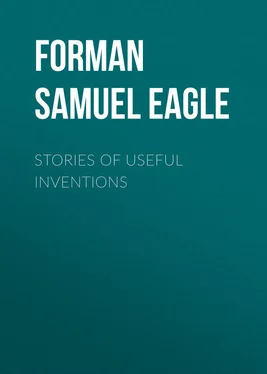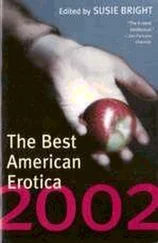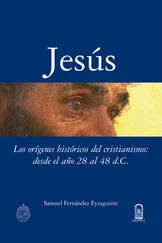Samuel Forman - Stories of Useful Inventions
Здесь есть возможность читать онлайн «Samuel Forman - Stories of Useful Inventions» — ознакомительный отрывок электронной книги совершенно бесплатно, а после прочтения отрывка купить полную версию. В некоторых случаях можно слушать аудио, скачать через торрент в формате fb2 и присутствует краткое содержание. Жанр: foreign_antique, foreign_prose, на английском языке. Описание произведения, (предисловие) а так же отзывы посетителей доступны на портале библиотеки ЛибКат.
- Название:Stories of Useful Inventions
- Автор:
- Жанр:
- Год:неизвестен
- ISBN:нет данных
- Рейтинг книги:5 / 5. Голосов: 1
-
Избранное:Добавить в избранное
- Отзывы:
-
Ваша оценка:
- 100
- 1
- 2
- 3
- 4
- 5
Stories of Useful Inventions: краткое содержание, описание и аннотация
Предлагаем к чтению аннотацию, описание, краткое содержание или предисловие (зависит от того, что написал сам автор книги «Stories of Useful Inventions»). Если вы не нашли необходимую информацию о книге — напишите в комментариях, мы постараемся отыскать её.
Stories of Useful Inventions — читать онлайн ознакомительный отрывок
Ниже представлен текст книги, разбитый по страницам. Система сохранения места последней прочитанной страницы, позволяет с удобством читать онлайн бесплатно книгу «Stories of Useful Inventions», без необходимости каждый раз заново искать на чём Вы остановились. Поставьте закладку, и сможете в любой момент перейти на страницу, на которой закончили чтение.
Интервал:
Закладка:
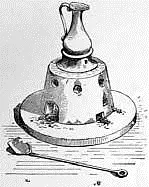
FIG. 6. – A STOVE OF THE MIDDLE AGES.
The open fireplace was always cheerful, and it was comfortable when you were close to it; but it did not heat all parts of the room equally. That part next to the fireplace might be too warm for comfort, while in another part of the room it might be freezing. About the end of the fifteenth century efforts were made to distribute heat throughout the room more evenly. These efforts led to the invention of the modern stove. We have learned that the origin of the stove is to be sought in the ancient brazier. In the middle ages the brazier in France took on a new form. Here was a fire-box (Fig. 6) with openings at the bottom for drafts of air and arrangements at the top for cooking things. This French warming-pan ( réchaud ) was the connecting-link between the ancient brazier and the modern stove. All it lacked of being a stove was a pipe to carry off the smoke, and this was added by a Frenchman named Savot, about two hundred years ago. We owe the invention of the chimney to England, but for the stove we are indebted to France. The Frenchman built an iron fire-box, with openings for drafts, and connected the box with the chimney by means of an iron flue or pipe. Here was a stove which could be placed in the middle of the room, or in any part of the room where it was desirable, and which would send out its heat evenly in all directions.
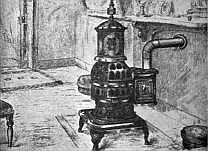
FIG. 7. – THE MODERN STOVE.
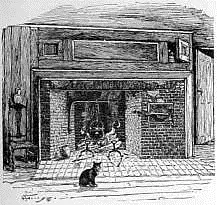
FIG. 8. – AN OLD-FASHIONED FIREPLACE AND OVEN.
The first stoves were, of course, clumsy and unsatisfactory; but inventors kept working at them, making them better both for cooking and for heating. By the middle of the nineteenth century the stove was practically what it is to-day (Fig. 7). Stoves proved to be so much better than fireplaces, that the latter were gradually replaced in large part by the former. Our affection, however, for a blazing fire is strong, and it is not likely that the old-fashioned fireplace (Fig. 8) will ever entirely disappear.
The French stove just described is intended to heat only one room. If a house with a dozen rooms is to be heated, a dozen stoves are necessary. About one hundred years ago there began to appear an invention by which a house of many rooms could be heated by means of one stove. This invention was the furnace . Place in the cellar a large stove, and run pipes from the stove to the different rooms of the house, and you have a furnace (Fig. 9). Doubtless we got our idea of the furnace from the Roman hypocaust, although the Roman invention had no special pipe for the smoke. The first furnaces sent out only hot air, but in recent years steam or hot water is sent out through the pipes to radiators , which are simply secondary stoves set up in convenient places and at a distance from the source of the heat, the furnace in the cellar. Furnaces were invented for the purpose of heating large buildings, but they are now used in ordinary dwellings.
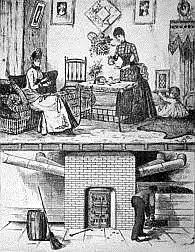
FIG. 9. – A MODERN FURNACE.
In its last and most highly developed form, the stove appears not only without dust and smoke, but also without even a fire in the cellar. The modern electric stove, of course, is meant. Pass a slight current of electricity through a piece of platinum wire, and the platinum becomes hot. You have made a diminutive electric stove. Increase the strength of your current and pass it through something which offers greater resistance than the platinum, and you get more heat. The electric stove is a new invention, and at present it is too expensive for general use, although the number of houses in which it is used is rapidly increasing, and in time it may drive out all other kinds of stoves. It will certainly drive all of them out if the cost of electricity shall be sufficiently reduced; for it is the cleanest, the healthiest, the most convenient, and the most easily controlled of stoves.
THE LAMP
Next to its usefulness for heating and cooking, the greatest use of fire is to furnish light to drive away darkness. Man is not content, like birds and brutes, to go to sleep at the setting of the sun. He takes a part of the night-time and uses it for work or for travel or for social pleasures, or for the improvement of his mind, and in this way adds several years to life. He could not do this if he were compelled to grope in darkness. When the great source of daylight disappears he must make light for himself, for the sources of night-light – the moon and stars and aurora borealis and lightning – are not sufficient to satisfy his wants. In this chapter we shall follow man in his efforts to conquer darkness, and we shall have the story of the lamp.
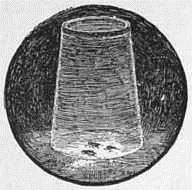
FIG. 1. – A FIREFLY LAMP.
We may begin the story with an odd but interesting kind of lamp. The firefly or lightning-bug which we see so often in the summer nights was in the earliest time brought into service and made to shed its light for man. Fireflies were imprisoned in a rude box – in the shell of a cocoanut, perhaps, or in a gourd – and the light of their bodies was allowed to shoot out through the numerous holes made in the box. We must not despise the light given out by these tiny creatures. "In the mountains of Tijuca," says a traveler, "I have read the finest print by the light of one of these natural lamps (fireflies) placed under a common glass tumbler (Fig. 1), and with distinctness I could tell the hour of the night and discern the very small figures which marked the seconds of a little Swiss watch."
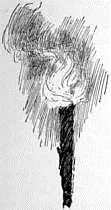
FIG. 2. – A BURNING STICK WAS THE FIRST LAMP.
Although fireflies have been used here and there by primitive folk, they could hardly have been the first lamp. Man's battle with darkness really began with the torch , which was lighted at the fire in the cave or in the wigwam and kept burning for purposes of illumination. A burning stick was the first lamp (Fig. 2). The first improvement in the torch was made when slivers or splinters of resinous or oily wood were tied together and burned. We may regard this as a lamp which is all wick. This invention resulted in a fuller and clearer light, and one that would burn longer than the single stick. A further improvement came when a long piece of wax or fatty substance was wrapped about with leaves. This was something like a candle, only the wick (the leaves) was outside, and the oily substance which fed the wick was in the center.
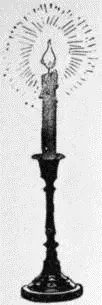
FIG. 3. – THE CANDLE.
In the course of time it was discovered that it was better to smear the grease on the outside of the stick, or on the outside of whatever was to be burned; that is, that it was better to have the wick inside . Torches were then made of rope coated with resin or fat, or of sticks or splinters smeared with grease; here the stick resembled the wick of the candle as we know it to-day, and the coating of fat corresponded to the tallow or paraffin. Rude candles made of oiled rope or of sticks smeared with fat were invented in primitive times, and they continued to be used for thousands of years after men were civilized. In the dark ages – and they were dark in more senses than one – torch-makers began to wrap the central stick first with flax or hemp and then place around this a thick layer of fat. This torch gave a very good light, but about the time of Alfred the Great (900 A.D.) another step was taken: the central stick was left out altogether, and the thick layer of fat or wax was placed directly around the wick of twisted cotton. All that was left of the original torch – the stick of wood – was gone. The torch had developed into the candle (Fig. 3). The candles of to-day are made of better material than those of the olden time, and they are much cheaper; yet in principle they do not differ from the candles of a thousand years ago.
Читать дальшеИнтервал:
Закладка:
Похожие книги на «Stories of Useful Inventions»
Представляем Вашему вниманию похожие книги на «Stories of Useful Inventions» списком для выбора. Мы отобрали схожую по названию и смыслу литературу в надежде предоставить читателям больше вариантов отыскать новые, интересные, ещё непрочитанные произведения.
Обсуждение, отзывы о книге «Stories of Useful Inventions» и просто собственные мнения читателей. Оставьте ваши комментарии, напишите, что Вы думаете о произведении, его смысле или главных героях. Укажите что конкретно понравилось, а что нет, и почему Вы так считаете.
